15 F. high in the Twin Cities Friday.
28 F. average high on February 12.
10 F. high temperature on February 12, 2015.
February 13, 1872: A snowstorm buries Sibley County with 12 foot drifts. Many people perished in the storm.
February 13, 1866: What may be Minnesota’s ‘Greatest Blizzard.’ It lasted for three days and buried barns in drifts. Luckily, it began at night when many people were at home.
February 13, 1838: In the days before Tower…at 2:00 am the mercury thermometer at Ft. Snelling freezes at 40 below. The actual temperature is unknown.
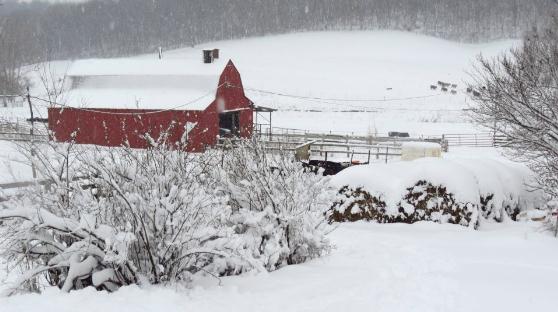
Obligatory Cold Front – Thaw Next Week – Fleeting Whiff of Spring Next Friday?
Comedian Carl Reiner finds snow to be “An unnecessary freezing of water.” Sinclair Lewis said “Winter is not a season, it’s an occupation.” A Canadian occupation, perhaps?
Now we squawk when the mercury dips below zero. Our parents had a lower threshold. -30F was a pretty big deal back in the 1970s. It seems our tolerance for the cold diminishes as background temperatures continue to rise.
The urban heat island (additional heat retained by concrete and asphalt) keeps the downtowns and close-in suburbs a few degrees “milder” this morning. Maybe -8F instead of -15F in the exurbs. The last subzero morning of winter? I’m starting to wonder.
The approach of milder air, coupled with a twist of cold air aloft sparks a couple inches of powder Sunday; heaviest bands set up over southwestern Minnesota, where this should be plowable.
The big story is a hint of spring next week: freezing by Monday – I wouldn’t be shocked to see 40s next Friday. We’ll see more cold fronts (no kidding, Paul) but the odds of subzero drop off rapidly in March.
Winter isn’t nearly done with us yet but go ahead and dream of spring break.
* Photo credit: Marlo Lundy.
“My Life Among the Giants”. Barry ZeVan (The Weatherman) has a terrific new book out. Details below.
How Your Life Can Change in a Few Milliseconds. I discovered that walking the dog, slipping on ice and breaking my ankle 2 days after Christmas. Not. Fun. But a friend of mine got a rude reminder of how fickle driving conditions can be in Minnesota. Curt Roeder is an attorney at Roeder Smith Jadin in Bloomington. While on I-35 south of Duluth he was passing a vehicle, hit ice and flipped his Subaru – it’s amazing he was able to walk away from this. Here is what Curt shared with me:
“I was traveling north to Duluth on 35W for a 1:00 hearing. As I went pass Sandstone, I noticed a larger amount of snow on the ground. No big deal.
I passed another car and was in the left lane, going 70-72 miles per hour. I came over a short rise and there was a patch of ice. At once, my two left tires were on ice, and the right tires were on dry pavement. The car pulled left, I counter steered right, and the car instantly fishtailed and went into the ditch left. The car flipped once and slammed into a tree. I walked away from it. Pretty amazing.
The plows didn’t catch that piece of ice, and I didn’t see it until I was in it. It all happened in a few seconds.
I forgot to tell you the surreal experience of the centrifugal force of the car flipping, with a full sleeve of musky lures and box of shotgun shells floating around me-from the back of the car, to the front.
I am very fortunate to be here with a few bumps and bruises.
This is just like the Subaru commercials where they say “they lived”. That’s me…”

Dr. Mark Seeley: Subzero The Exception, Not The Rule. Today is the 10th subzero morning so far this winter at KMSP. During an average winter we see 22.5. That point-five is a real bummer too. Here’s an excerpt from this week’s edition of Minnesota WeatherTalk: “…For January and February of 2016 so far the frequency of sub-zero F temperatures is less than average. Here are the average number of sub-zero nights per month for selected Minnesota climate stations with the number of nights measured so far in 2016 (through February 12) shown in parentheses……January: Duluth 11 (1); International Falls 16 (14); Embarrass 18 (12); Saint Cloud 14 (9); MSP Airport 11 (9); Rochester 10 (9) February 1-12: Duluth 11 (6); International Falls 12 (5); Embarrass 15 (5); Saint Cloud 10 (2); MSP Airport 7 (0); Rochester 6 (2)…”

Sunday Snow? Don’t Get Your Hopes Too High. No, this will not be a repeat of the Groundhog Day Storm. We may be lucky to pick up an inch or two Sunday; plowable amounts probably confined to far southern Minnesota, closer to the Iowa line. NAM predicted snowfall: NOAA and AerisWeather.
Early Taste of March. Yes, it’s cold, yes we’ll pick up a whopping inch or two Sunday, but the big weather story is a rapid thaw next week with the warmest surge of air coming late in the week. If we didn’t have snow on the ground we’d probably see 50s. As it is 40s will feel like a revelation. Within 6-7 days it may be mild enough aloft for rain showers. Remember those?
Mild End to February. Since this is a Leap Year we get an extra day to savor February’s splendor, and that extra day may be quite nice, weatherwise, if you believe what the GFS is predicting for 500 mb winds (18,000 feet) for late month, showing a big storm for California with a mild flow east of the Rockies. I daresay the coldest temperatures of winter, a winter that hasn’t been all that bad, is behind us now.
More Rain, Less Snow for U.S. Winters. Here’s an excerpt of an interesting analysis at Climate Central: “…As the world warms, it’s changing the essence of winter. It’s not that less precipitation is falling (though that is happening in some areas). It’s that less winter precipitation is falling as snow, according to a new Climate Central analysis. Not all winter precipitation is created equal. Less winter precipitation falling as snow is bad news for water supplies and wildfires out West and the financial fate of ski resorts across the country. To see how winter precipitation is changing, we looked at states that all see notable amounts of snow (sorry, Florida). Our analysis included 2,121 weather stations and looked at days with precipitation from the months that typically see at least 1 inch of snow so we could get a full sense of not just winter, but the snowy shoulder seasons as well…”
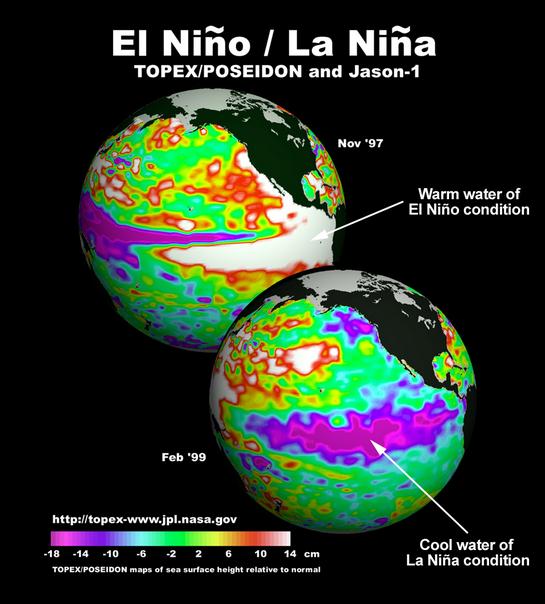
A Growing Risk of La Nina by Fall? La Nina favors drought and more hurricanes in the fall. Reuters explains; here’s the intro: “Even as the El Nino weather phenomenon continues to impact global temperatures and crops, its counterpart La Nina is increasingly expected to emerge in the coming months for the first time in four years. The return of La Nina, Spanish for “the girl” and characterized by unusually cold ocean temperatures, is possible later this year, the U.S. government forecaster said Thursday. It joined other forecasters in projecting La Nina could follow on the heels of one of the strongest El Ninos on record. Weather models indicate La Nina conditions, which tend to occur unpredictably every two to seven years, may emerge in the Northern Hemisphere fall...”
The Weather Channel has more perspective on the possible flip from El Nino to La Nina here.
March Preview. Although not as warm as predicted a few weeks ago NOAA’s CFSv2 model is still forecasting March temperatures 4-6F warmer than average next month; a lingering whiff of El Nino continuing to flavor weather over most of the USA. Source: WeatherBell.
We May Have Just Seen a Truly Ominous New Weather Record. Hurricanes get their fuel from warm ocean water. The warmer (and deeper) the water, the greater the potential for intensification. In theory warming waters should fuel more extreme hurricanes. Are we starting to see this in the data? Here’s a clip from The Washington Post: “…That’s what makes it so striking to find Jeff Masters, a hurricane expert and co-founder of the Weather Underground, declaring that late October’s Category 5 Hurricane Patricia wasn’t just the strongest hurricane ever seen in the Western hemisphere. No, Masters asserts that Patricia was the strongest tropical cyclone ever reliably recorded by humans, at least when measured by its wind speeds. (Tropical cyclones go by various names, including hurricanes and typhoons, in different parts of the world). “I regard Patricia as unmatched for the strongest winds of any tropical cyclone in recorded history,” Masters wrote on Monday...”
Image credit: “A handout satellite image made at 10:45 am ET and released by the US National Oceanic and Atmospheric Administration (NOAA) on 23 Oct. 2015 shows Hurricane Patricia (L) as it approaches the coastline of Mexico from the Eastern Pacific.” EPA/NOAA.

U.N. Agency: Major Droughts Count Rises Amid Record-Hot 2015. The story is from AP and The Washington Post; here’s the intro: “The U.N. agency specializing in reduction of disaster risks says the Earth faced more than twice as many major droughts last year than the average of the last decade. Focusing part on the human cost of the hottest year on record last year, the U.N. Office for Disaster Risk Reduction says in a trend analysis Thursday that 98.6 million people were affected by disasters in 2015. It counted 32 major droughts last year, up from an annual average of 15 over the preceding decade…”
File photo: USGS.
21st Century U.S. “Dust Bowl” Risk Assessed. Could it happen again? Land use practices have improved dramatically since the 1930s, but if California’s epic, 4-year drought had set up over the Great Plains instead? Will Iowa become the Cotton State? Here’s an excerpt from The BBC: “…A repeat of 1930s weather today would lead to a 40% loss in maize production. In a 2-degree warmer world, it becomes a 65% reduction, the team projects. “The 1930s were really extreme and, yes, the chances of the same precipitation distribution happening again are small,” explained Joshua Elliott, from the University of Chicago’s Computation Institute. “But the temperature distribution wasn’t any more extreme than we’ve seen in 2012 or 1998, for example…” (File photo: PBS and Ken Burns).
The Current El Nino May Hold Lessons for How To Deal With a Warming Planet. This El Nino may exceed 1997-98 for the largest, most intense ever recorded. Here’s an excerpt from PRI, Public Radio International: “…In some sense, what we’re seeing around the world right now is an advanced view of the sort of things that we’ll see more of in the future — all of the weather systems being somewhat more vigorous than they have been in the past, the risk of both droughts in some regions and flooding in other regions,” says climate scientist Kevin Trenberth of the National Center for Atmospheric Research. El Niño is essentially a “mini global warming” event, Trenberth explains. It arises from a build-up of heat in the waters of the equatorial Pacific Ocean. The warm ocean waters and higher sea levels begin in the western tropical Pacific and then spread to the central and eastern Pacific...” (Image credit: NOAA).
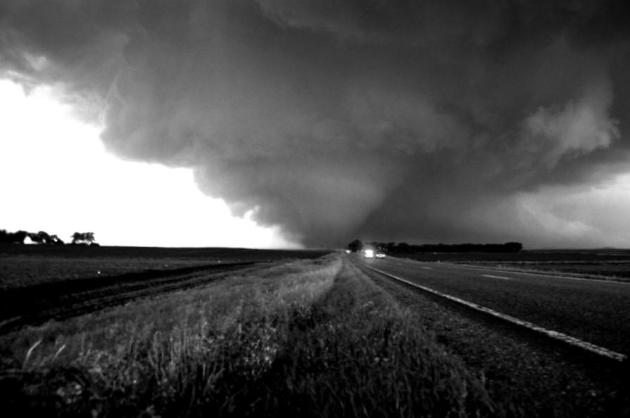
Until 1950 U.S. Weathermen Were Forbidden From Talking About Tornadoes. Ironic. Today career suicide is pretty much limited to a). missing a tornado, or 2). talking about climate change on the air. An interesting nugget, with great historical context from Atlas Obscura: “…In the first half of the 20th century, tornados were all over the United States: destroying whole towns, screaming through the papers, tearing up the newsreels, and whipping Dorothy from Kansas to Oz. But there was one place you couldn’t find them: the weather report. From 1887 up until 1950, American weather forecasters were forbidden from attempting to predict tornados. Mentioning them was, in the words of one historian, “career suicide…”
June 16, 2010 Albert Lea tornado photo courtesy of meteorologist Aaron Shaffer, founder of MinnyApple.com.
The Importance of Tornado Safe Rooms In America’s Schools. Independent Journal takes a look at the new, reinforced safe room installed in the wake of a massive EF-3 tornado in Missouri, and makes a pretty sound argument why all schools (without basements) should consider adding on: “…Dr. Fred Czerwonka, the assistant superintendent for the school district, told Independent Journal Review that he is very grateful for the support of the community in helping to construct these rooms. And his school isn’t the only one adopting them. Many schools across the country are building similar rooms to help keep their students safe in the event of a tornado…” Image: Build Block
Study: Downpours Over Land Have Slowed Sea Level Rise. The hydrological cycle is on “fast-forward”, harder rains – faster rates of evaporation, but what are the implications for sea level? This story is a bit counterintuitive, but it’s a good read, focused on emerging research at Climate Central: “…The land “has been taking up water,” said NASA Jet Propulsion Laboratory scientist John Reager, who led the study published Thursday in Science. “That’s been slowing the rate of sea level rise.” The effect may have been temporary, and it has not been enough to protect coastal residents from profound shoreline changes triggered by global warming. The new study relied on NASA gravity data from 2002 to 2014 to track the changes in the amount of water stored on land. The finding excluded water stored in glaciers, which continued to decline as warming temperatures caused them to melt…”
Photo credit above: “Storms can transfer water from the oceans to the land.” Credit: Shannon Dizmang/Flickr.
World’s Most Polluted City, Delhi, Plans New Limits on Car Use. Reuters has the article; here’s the intro: “The Delhi government plans another round of tough measures to restrict the use of private cars and clean up toxic air in the Indian metropolis, the world’s most polluted city. From April 15, for two weeks, cars will only be allowed on the road on alternate days, going by whether their number plates are odd or even, Chief Minister Arvind Kejriwal said on Thursday. “We are seriously considering if we can do this for 15 days every month,” Kejriwal said. “We can’t do this on a permanent basis until we get better public transport...”
Photo credit above: “A traffic policeman wears a mask to protect himself from dust and air pollution as he signals to drivers in New Delhi, December 23, 2015.” Reuters/Adnan Abidi/Files.
Skid in Oil Prices Pulls The Recycling Industry Down With It. Oil-based products now too cheap to recycle? Here’s an excerpt at The New York Times: “…Recycling is in a crisis,” said David P. Steiner, chief executive of Waste Management. “It used to be that all players in the recycling ecosystem were able to make a profit. That’s not the case anymore.” With concerns about climate change mounting, it’s an awkward time for the recycling industry to be under such pressure. The environmental merits of recycling are well accepted by the public, if still disputed by some. Curbside collection programs are commonplace…”
Photo credit above: “A worker cleaning equipment used to process recycling material at the Waste Management facility in Newark.” Credit Dave Sanders for The New York Times.
Saudi Arabia Is Winning Its War Against the U.S. Oil Industry. Not sure there will be any winners (sorry Donald) when this is done. Here’s an excerpt from FiveThirtyEight.com: “A bit over a year ago, Saudi Arabia declared war on the U.S. oil industry. This week brought new signs that the Saudis might at last be winning. Some quick background: Saudi Arabia has long played the role of the “swing producer” in the oil market, meaning that they tried to stabilize prices by pumping more oil when prices went up and pumping less when prices went down. But that was before the fracking revolution led to a surge in U.S. oil production, eating into Saudi Arabia’s share of the oil market and (along with other factors) driving down prices…”
Game Change: Tesla and GM Announce Affordable, Long-Range Electric Cars. I’m pretty excited about the Bolt from GM and Tesla’s forthcoming Model 3. Our kids and grandkids won’t think twice about buying (or borrowing) an electric car. Here’s an excerpt at ThinkProgress: “Two of the world’s leading electric vehicle (EV) producers say that they will soon deliver 200+ mile range EVs at a game-changing price of $30,000 or less — including tax incentives. Until now, EVs have not been considered a mass-market consumer vehicle in the United States for two key reasons — high price and low range. But with battery prices continuing their unexpectedly rapid price drop, both General Motors and Tesla have announced that they can address both of those problems simultaneously in the near future. For GM, it will be the Chevy Bolt, and for Tesla, the Model 3...”
Photo credit above: Carolyn Kaster, AP.
A National Power Grid: The Answer to Renewable Energy’s Storage Problem? Co.Exist has the story; here’s a clip: “Wind power is now as cheap as coal, and in some places, solar is cheaper than natural gas. But there’s one thing that most people assume still holds back renewable energy in the U.S.: power plants need a constant source of energy, and there isn’t a cheap enough way to store wind or solar at a large scale yet. But a new study suggests we don’t actually need to store that power. Instead—because the wind is always blowing somewhere in the U.S., and a cloudy day in one city will be sunny elsewhere—researchers suggest we just need a bigger grid, and better power lines that could send energy wherever it’s needed…”
Photo credit above: “The wind is always blowing somewhere.” Andrei Mayatnik via Shutterstock.
The Koch Brother’s Dirty War on Solar Power. Here’s a clip from a story at RollingStone: “…But the birth of Big Solar poses a grave threat to those who profit from burning fossil fuels. And investor-owned utilities, together with Koch-brothers-funded front groups like American Legislative Exchange Council (ALEC), are mounting a fierce, rear-guard resistance at the state level – pushing rate hikes and punishing fees for homeowners who turn to solar power. Their efforts have darkened green-energy prospects in could-be solar superpowers like Arizona and Nevada. But nowhere has the solar industry been more eclipsed than in Florida, where the utilities’ powers of obstruction are unrivaled…”
Illustration credit above: “No place is the problem clearer than in Florida, where the Sunshine State’s vast solar potential has gone to waste.” Illustration by Victor Juhasz.
The Kids Are Alright. An article at Vox restored my faith in humanity, and specifically, the generation that comes next. Here’s the intro: “We know this because every two years, the federal government asks thousands of teenagers dozens of questions about whether they are all right. Since 1991, it has sent something called the Youth Risk Behavior Surveillance Survey to more than 10,000 high school students every other year, to inquire about all sorts of bad behaviors that range from drug use to unprotected sex to fighting at school. The overarching question this survey asks is basically: How much trouble are you getting into? The answer, lately, has been, “Not that much at all” — especially when you compare today’s teens with their parents, who came of age in the early 1990s...” (File photo: Shutterstock).
How People Learn To Become Resilient. The New Yorker has a great story; here’s a link and excerpt: “…Resilience presents a challenge for psychologists. Whether you can be said to have it or not largely depends not on any particular psychological test but on the way your life unfolds. If you are lucky enough to never experience any sort of adversity, we won’t know how resilient you are. It’s only when you’re faced with obstacles, stress, and other environmental threats that resilience, or the lack of it, emerges: Do you succumb or do you surmount?…”
Illustration credit: “Perception is key to resilience: Do you conceptualize an event as traumatic, or as a chance to learn and grow?” Credit Illustration by Gizem Vural.
I Tried That $15 Cup of Coffee And I’m Just Going To Say It Might Be Worth It. I suddenly feel better about my $4 cup of Caribou. Here’s an excerpt at SFist.com: “In order to prepare myself to drink a $15 cup of coffee — 8 ounces of fair-trade pour-over from Equator on Market Street — I brushed my teeth, bathed in oil, confessed my sins, and got on BART. Right after SFist posted yesterday that a $15 Cup Of Coffee Will Make You Spit Out Your Coffee, several journalistic pleasure seekers such as myself were on the case. BuzzFeed came at the subject with a series of GIFS, pronouncing the coffee “Better than a Keurig...”
Photo credit: “$30 of coffee.” Photo: Caleb Pershan/SFist.
“Thank You Jerry Stiller…” Thank you Barry ZeVan (the Weatherman) who encouraged me to move to Minnesota back in 1982. I owe you a debt of gratitude for that recommendation. Barry (or BZ as I call him) recently wrote a book about his experiences with some notable notables, including a long list of famous Minnesotans. One of them is Walter Mondale, who wrote the following blurb on the back of his new book:
“Barry ZeVan, the Weatherman, is the person we watched as a television personality with personality. His autobiography tells us there was far more to his life in addition to television weather forecasts and broadcasting.His life story is a compelling read with constant surprises on almost every page. I heartily recommend it to anyone who thinks they know about survival.”
– Walter F. Mondale, former U.S. Vice President, Ambassador to Japan and United States Senator.
Barry’s book is introductorily titled “Thank You, Jerry Stiller….for Urging Me To Write This Book” (with Jerry’s written permission to Barry and really the reason Barry decided to write the book). The main title is “Barry ZeVan: My Life Among The Giants, A Memoir”. It’s available today on Amazon. Alternate site link to the book is, direct to the book page, goo.gl/wBF8PM. If you’re a fan of Minnesota weather, celebrities and great, poignant, heart-warming story-telling you will love this book!

TODAY: Cold start. Fading sun. Winds: S 5-10. High: 9
SATURDAY NIGHT: Clouds increase, flurries late. Low: 0
SUNDAY: Couple inches of snow, slick roads. Winds: SE 10-20. High: 21
MONDAY: Some sun, risk of a thaw. Wake-up: 18. High: 32
TUESDAY: Next clipper, coating of flakes? Wake-up: 23. High: 29
WEDNESDAY: More clouds than sun, cooler. Wake-up: 14. High: 25
THURSDAY: Overcast, windy and milder. Winds: SE 15-25. Wake-up: 21. High: 36
FRIDAY: Vague hints of spring. Rain shower? Winds: S 10-15. Wake-up: 33. High: 43
Climate Stories…
A ClearPath to a Clean America: A Conservative Alternative to Energy Innovation. I couldn’t agree more; remove choking layers of (unnecessary) regulation and make it easier for companies to launch and thrive in America, and not feel compelled to move overseas (where they can often do it cheaper). Here’s an excerpt from Independent Journal Review: “…What I’m trying for is more commonsense regulation, so that there are faster approval processes that are still safe.” He explains that had there not been such slow-moving regulations here in the U.S., that same company would’ve kept its facility on American soil, where it could then provide jobs and grow the economy. It is from these regulatory roadblocks that ClearPath derives its name. It’s a literal nod to the path the organization has to clear—through layers of dated bureaucratic control—for forward-thinking energy providers to stay in the U.S…”
The New Age of Climate Exploration. The fantasy of a “Northwest Passage” across the normally frozen waters of the Arctic is rapidly becoming a reality during the summer season. Here’s an excerpt at The Guardian: “…The reliable deep cold of the polar regions is part of what gives us a stable climate system: with extreme cold at the poles, the warmer climate bands of lower latitudes are more stable and defined. That defined differentiation of climate bands keeps the Polar Vortex swirling in the Arctic. Cold reinforces cold, which keeps the climate bands steady. As the Arctic warms, the warmer air mixes more readily with the climate of lower latitudes, and the Polar Vortex “bleeds” into those other latitudes, bringing deep Arctic winter to more temperate regions. This is climate destabilization…”
Photo credit: “Shot at the same place as the above photo from the 1994 expedition, this 2007 photo clearly shows open water where there should be close and dangerous pack ice.” Photograph: David Thoreson
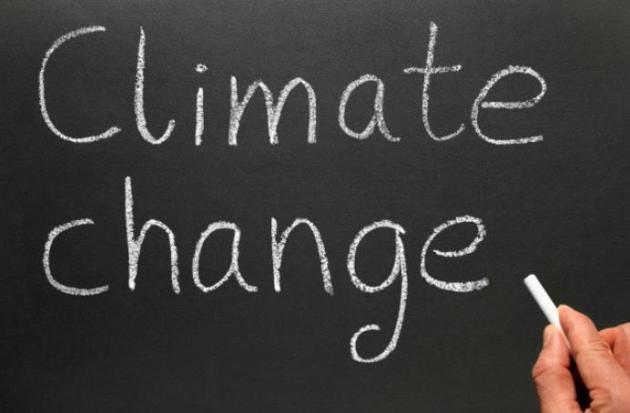
Why U.S. Science Teachers Struggle to Teach Climate Change. TIME takes a look; here’s the intro: “Science teachers in the U.S. often botch lessons on climate change, hampered by conservative values in their community and their own lack of knowledge on the topic, according to new research. The study, published in the journal Science, looked at the results of a survey of 1,500 public school teachers across the U.S. and found that 70% of middle school science teachers and 87% of high school biology teachers devote some class time to climate change. But the quality of those lessons can vary greatly from teacher to teacher. Nearly a third of U.S. teachers who instruct on climate change say that the phenomenon is likely caused by “natural causes” despite the fact that more than 95% of climate scientists agree that humans have driven global warming...” (File image: Shutterstock).
* The report at Science is here.
** More perspective at Scientific American.
Faith and Climate Change: A Meteorologist’s View. I want to thank the College of Saint Benedit and St. John’s University, Gary Eichten and MPR for arranging at Q&A earlier this week on campus. The full interview is available online, courtesy of MPR: “Dogma, ideology and money are blocking efforts to address climate change, says Twin Cities meteorologist Paul Douglas. Douglas, a Republican and evangelical Christian, says he believes in stewardship. He was a featured speaker at a Monday, Feb. 8, 2016, event as part of the “On Campus with Gary Eichten” series. The event was held at St. John’s University and the College of St. Benedict.”
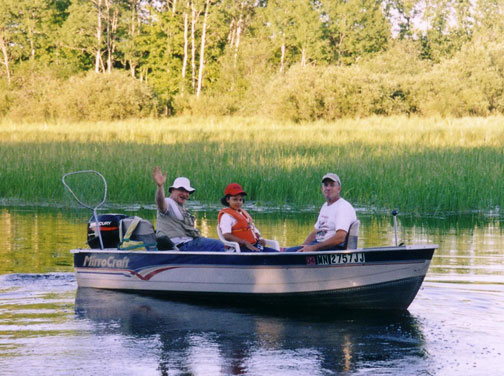
Warming: A Mixed Blessing for Minnesota. In my Monday interview at St. John’s University with Gary Eichten on MPR I mentioned my (opinion) that, overall, a warming Minnesota will probably be a net positive, at least looking out 10-15 years. It won’t be a net positive for coastal areas and much of the south and southwest, and most of the developing world. And I don’t want to minimize the stress on water resources, wetlands and the Boundary Waters as we see more symptoms of weather whiplash, cycling back and forth between flood and drought. But we will (hopefully) maintain the water resources that will be in increasingly short supply west of the Mississippi River. Here are a few comments and observations from Al Schmidt at the MN DNR. These are his personal opinions, and do not represent the official views of the DNR:
-
“Walleye are a coolwater fish (our state fish of course), and their habitat is warming such that black bass are expanding (smallmouth and Largemouth Bass) their range northward. More accurately, where they occur with Walleye, warming water favors black bass. There is evidence that if we continue on the path we’re going walleye might decline simply because they are physiologically better suited to cooler water. A prey species important to walleye (and other top predators) and one that has even cooler habitat requirements is the Cisco. They are currently declining in Minnesota, especially along the southern edge of their range which is central Minnesota.
- As you’re probably aware, Minnesota is considered a transitional zone state, whereby the southern prairie meets the central hardwood forest which in turn gives way to the northern boreal forest …..this of course is a southwest to northeast progression. As things are playing out now with the climate, we stand to lose the awesome pines and firs that are so beloved by 99-percent of us. Think of the Boundary Waters and Voyageur’s National Park as a landscape of brush, grass and oak/maple woods instead of the fragrant balsams and towering pines we’re used to. The thought of my grandchildren losing this saddens me. Under the current scenario, they’ll have to drive to Ontario in 2100 to experience the woods we take for granted. I was born and raised here and to me, our lakes and pines and our cold weather make us who we are – a proud northern people.”
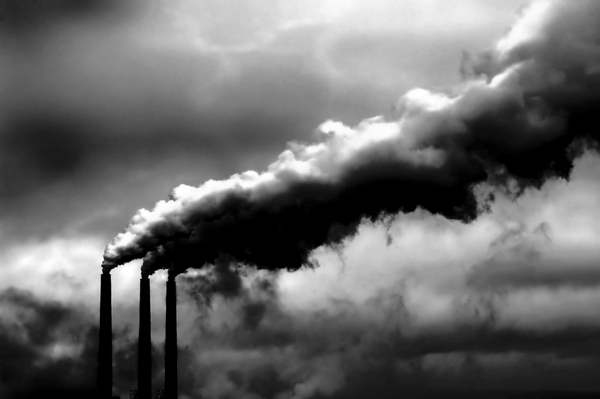
The Supreme Court Can’t Halt a Cleaner Energy Future For Our Children. I’m writing a book, “Caring for Creation” with the author of this Op-Ed at PennLive.com. Mitch Hescox is a minister, he leads EEN, The Evangelical Environmental Network (I am on the board), self-identified as conservative and Republican. Mitch is also the son of a coal miner, so he has a very interesting story to tell. Here’s an excerpt: “…What we’re fighting for is what our nation’s founders proclaimed in Philadelphia in 1776: life, liberty, and the pursuit of happiness. We want their lives liberated from pollution so they can be healthier and happier as they create their own futures. Unfortunately, reaching those goals has been made difficult by fouled air and dirty water that impacts both our unborn and born babies. As pro-life evangelicals, we have a special concern for the unborn. We want children to be born healthy and unhindered by pollution that impacts them even before they take their first breath. The medical community has long known of the environmental impacts on our unborn children…”
Climate Change May Have Helped Spread Zika Virus According to WHO Scientists.Here’s an excerpt at The Guardian: “The outbreak of Zika virus in Central and South America is of immediate concern to pregnant women in the region, but for some experts the situation is a glimpse of the sort of public health threats that will unfold due to climate change. “Zika is the kind of thing we’ve been ranting about for 20 years,” said Daniel Brooks, a biologist at University of Nebraska-Lincoln. “We should’ve anticipated it. Whenever the planet has faced a major climate change event, man-made or not, species have moved around and their pathogens have come into contact with species with no resistance…”
Photo credit above: “Tamires da Costa, 16, who is four months pregnant, stands in a street with standing flood water next to her home in the Parque Sao Bento shantytown of Rio de Janeiro, Brazil on 29 January 2016.” Photograph: Leo Correa/AP.
What Scientists Just Discovered in Greenland Could Be Making Sea-Level Rise Even Worse. The Washington Post has details; here’s an excerpt: “Rising global temperatures may be affecting the Greenland ice sheet — and its contribution to sea-level rise — in more serious ways that scientists imagined, a new study finds. Recent changes to the island’s snow and ice cover appear to have affected its ability to store excess water, meaning more melting ice may be running off into the ocean than previously thought. That’s worrying news for the precarious Greenland ice sheet, which scientists say has already lost more than 9 trillions tons of ice in the past century — and whose melting rate only continues to increase as temperatures keep warming...”
Image credit above: “This NASA animation shows Greenland’s ice mass loss from January 2004 to June 2014.” (NASA)
Can Only Congress Prevent Climate Change? If you live (or govern) in south Florida climate change isn’t an abstraction; rising seas are already taking a toll. Here’s an excerpt at Bloomberg Business: “…The new Climate Solutions Caucus differs from most other House groups in that its co-founders, Representatives Carlos Curbelo and Ted Deutch, are from different parties. And they want to keep it bipartisan, with an even number of Rs and Ds. It’s probably not a coincidence that Curbelo, a Republican from Florida’s 26th congressional district, and Deutch, a Democrat from the 21st district, represent people witnessing climate change in its starkest terms: Their communities, in Miami and surrounding counties, are slowly slipping into the sea…” (Miami Beach photo credit: Trip Advisor)
What These Christians Are Giving Up For Lent: Fossil Fuels. Here’s a clip from The Washington Post: “A new initiative in the United Kingdom is not only calling for Christian communities to band together in support of clean energy, but actually helping them get their own electricity that way. The Big Church Switch, which launched Wednesday, aims to inspire both individuals and churches to make the switch to renewable energy sources — and they’re already gaining support from church leaders in the country...”
Photo credit above: “Solar panels sit in an array at the Southwick Estate Solar Farm, operated by Primrose Solar Ltd., near Fareham, U.K., on Friday, Oct. 2, 2015. The plant, situated in 200 acres (81 hectares) of farmland, consists of 175,000 monocrystalline PV modules and has a capacity of 48 megawatts.” Photographer: Simon Dawson/Bloomberg
The Court Blocks Action on Climate Change. Science has been turned into a political football. Now the battle has reached the Super Bowl of Jurisprudence, The Supreme Court. Here’s the intro of an Op-Ed at The New York Times: “The Supreme Court’s extraordinary decision on Tuesday to temporarily block the Obama administration’s effort to combat global warming by regulating emissions from power plants was deeply disturbing on two fronts. It raised serious questions about America’s ability to deliver on Mr. Obama’s pledge in Paris in December to sharply reduce carbon emissions, and, inevitably, about its willingness to take a leadership role on the issue. And with all the Republican-appointed justices lining up in a 5-to-4 vote to halt the regulation before a federal appeals court could rule on it, the court also reinforced the belief among many Americans that the court is knee-deep in the partisan politics it claims to stand above…”
The Supreme Court Could Block Obama’s Climate Plans – But It Can’t Stop Clean Energy. Here’s an excerpt of a Chris Mooney article at The Washington Post: “…However, there’s another side of the story. The fact of the matter is that the Clean Power Plan wasn’t set to fully kick in until 2022 — and in the interim, the U.S. has been going through something that looks a lot like the kind of transition it is meant to prompt even without the plan in place. Namely: The nation has been slowly decarbonizing its electricity system, through the growth of renewables and the switching from burning coal to burning natural gas…”
Photo credit above: “Supreme Court Justice Elena Kagan, from left, Chief Justice John Roberts, Justice Anthony Kennedy, Justice Ruth Bader Ginsburg, Justice Stephen Breyer, and Justice Sonia Sotomayor arrive before President Barack Obama delivers the State of the Union address to a joint session of Congress on Capitol Hill in Washington, Tuesday, Jan. 12, 2016.” (AP Photo/Evan Vucci).

